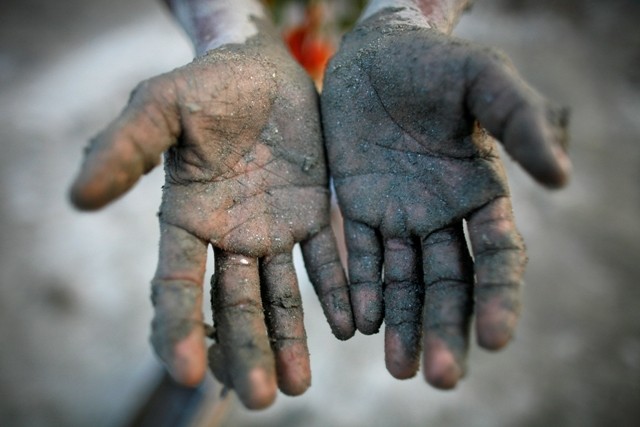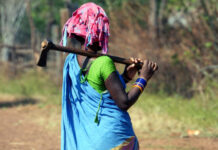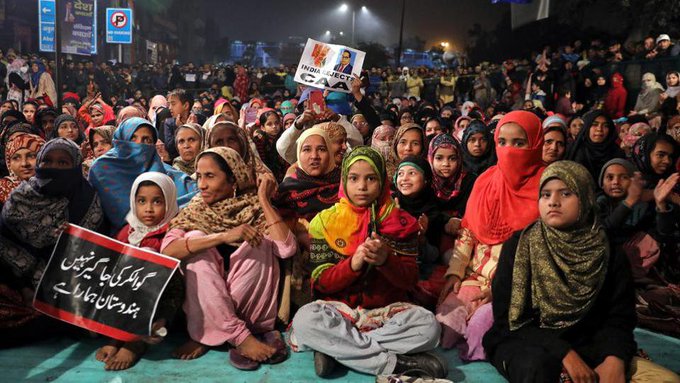Childhood, a period which is sensitive both mentally and physically. It is a time where emotional, social and language development of a child must be given a lot of care. The phase of Childhood I realised varies across time and space. We cannot generalize one idea of childhood. And not every child has a very rich and happy childhood. Childhood is I believe in the idea of a child being a clean slate but it should not be confused with the idea that a child is innocent and has no idea about what is going on around them, instead a child is very much aware of his surroundings, is manipulative and cunning.
Philippe Arries, a social historian, believed that childhood is socially and historically constructed and that attitudes to childhood have changed over the centuries and it keeps changing giving rise to an everlasting view on what childhood is. He writes-
In medieval society the idea of childhood did not exist; this is not to suggest that children were neglected, forsaken or despised. The idea of childhood is not to be confused with affection for children: it corresponds to an awareness of the particular nature of childhood, that particular nature which distinguishes the child from the adult… In medieval society, this awareness was lacking…as soon as the child could live without the constant solicitude of his mother, his nanny or his cradle-rocker, he belonged to the adult society.
Twentieth century separates childhood from adulthood. Boyden asserts that during the twentieth century, a specifically European conception of childhood was exported to the Third World :
On that hot summer afternoon (summer of 1999) as I walked down busy Chowringhee Road, the large billboard had caught my eye. It was a message from the police, implicitly addressed to the city’s literate and civic-minded residents. Any child 5–10 years of age found on the street during school hours should be brought to the nearest police station…Since 1999, several of the city’s police stations had begun to house an alternative education programme that targeted working chil- dren from adjoining slums. However, such initiatives only worked within the confines of these poorer neighbourhoods. Being local initiatives, they did not – unlike the proposal advertised on the billboard – address the rest of the city and its literate public sphere as their audience.
The twentieth century is indeed the ‘century of the child’ and perhaps at no other time have children been so highly profiled. The ideology of the child-centred society gives ‘the child’ and ‘the interests of the child’ a prominent place in the policy and practices of legal, welfare, medical and educational institutions. It is also an era of globalization – an era of intensifying contacts and interactions among societies literally around the world. This era of globalization, I believe, is the new colonization by the developed, rich north nations of the world on the developing south nations of the world. The idea that children belong in schools and not in streets of working emerges in the 19th century and I happen to believe that the construct of child labour is a social construct of the western developed countries as they want to have an universal childhood, but fail to understand the complexities of life around the globe. Let me pause here and take you through a real life experience-
Manisha, The oldest amongst her four siblings ends up running to our house to hide away from her parents who want her to get married. Manisha comes from a very poor village, her family and others are daily wage earners working in the tea gardens and factories in Assam.wen she came to us she was fascinated by the idea of going to school and learning how to read and write so my mumma after seeing her interest decided to teach her but eventually she lost interest and gave up. We even asked her to put her siblings in school so that they can learn and get a good job to which she laughed and said, “will the school also give us money so that we can survive?” She continued to stay with us for five long years and refused to go back until 2019 October. After all a home is one’s home, nothing can change that. Recently she became a mother of two. She is very close to us and my mumma strictly keeps telling her that when the babies grow to put them in school and to make them educated. Manisha, her husband, mother-in-law and their babies live in poverty. Her husband and in-laws cannot wait for the babies to grow old and get to work so that they can provide for the family. Her husband laughs at the idea of sending his children to school, as he says that school did nothing good to him. He told us that he has studied till class 10, in the hope that he will get a good job, but there is no work for him, he is still a daily wage earner, working in the tea garden plucking leaves along with his friends who never went to school. They don’t see working from early age as child labour or harmful they view it as a means to survive. For them school is a waste of time and energy, as opposed to international organisations such as UNICEF who want to put an end to child labour and make every child go to school.
What is child labour? Child labour is any work that deprives children of their childhood, their potential and dignity, and that is harmful to physical and mental development. While I do agree that millions of children worldwide are engaged in labour that is hindering their education, development and future livelihoods; many of them are involved in the worst forms of child labour that cause irreversible physical or psychological damage, or that even threaten their lives. This situation represents an intolerable violation of the rights of individual children, it perpetuates poverty and it compromises economic growth and equitable development but my concern with the construct of child labour is that of Child labour vs compulsry schooling. Our understanding is, take the child out of child labour and put the child in a school. Child labour a created social issue for the developing countries has a deeper impact on us.
All children must be in schools is a questionable content because as Manisha and her family view working as survival and going to school being a waste of time and money, there must be other daily wage earners who view compulsory schooling the same way. Suppose a country effectively outlaw child labor. Three consequences would follow: (1) the families (and the economy) would lose the income generated by their children; (2) the supply of labor would fall, driving up wages for adult workers; and (3) the opportunity cost of a child’s working time would shrink, making staying in school (assuming schools were available) much more attractive. In principle, a virtuous circle would follow: with more schooling, the children would get more skills and become more productive adults, raising wages and family welfare.20 To the extent that the demand for labor is elastic, however, the increase in wages implies that the total number of jobs would fall.(S.L. Bachman,2000)
Childhood is a period of compulsory schooling. Why is it that childhood is a period of compulsory schooling? When britishers colonized us, we were told that we are savages, illiterates, dirty, mannerless and so on and so forth. They highlighted the need for ‘proper’ education (as if education did not exist in our country before they arrived) brought in english education, so that they could get skilled labour to work for them, in their companies to exploit us and to make themselves rich. Now if we happen to apply the same lens here then i don’t think it will be wrong to say that the global south is being colonized and exploited by the global north. Organizations such as Unicef, UNESCO, ILO, UNRC, CRC are all coming from the western developed countries who are colonizing us. I believe that compulsory schooling and ban child you are a scam, and I believe so because if more children are put in schools the result will be more skilled labour which will help the developed countries to become richer whilst exploiting us because we live in a globalised world and as seen in the documentary ‘Santa’s Workshop’ rich countries put their manufacturing unit in developing countries as they have a notion that we are poor we need work for sustaining and whatever work we will get we will take it no matter how less they pay us because let’s face the truth how many children will know what is the minimum amount of payment they should be getting and what are their rights once they start working.
Ending child labor will require action on many levels: economic growth; laws and law enforcement; social mobilization; and building schools and making them affordable, accessible and appropriate. Right to Free & Compulsory Education Act, 2009 was given consent by the then President of India on twenty sixth August, 2009. In 2002, our Constitution received the 86th Amendment in which Article 21A was inserted which mentions about-“Free & Compulsory education for all the children between the age of 6 to 14 years. But what after the age of 14? Who is going to provide them with education? What job are they going to end up with? The problem of Child labour and its abolishment is very deep rooted and is a vicious cycle. Child labor is a public health issue with negative outcomes that demands special attention. A multidisciplinary approach is needed to tackle child labor issues. Poverty tends to be the single major cause behind child labor. Lack of affordable schools and affordable education is another major factor to force children to work. Certain cultural beliefs rationalize this practice and encourage child labor as character building and skill development for children. Some cultural traditions encourage child labor as footsteps to their parents’ jobs. Socioeconomic disparities, poor governance, and poor implementation of international agreements are among major causes of child labor. Macroeconomic factors also encourage child labor by the growth of low pay informal economy. Child labor prevents the normal well-being including physical, intellectual, and emotional psychosocial development of children. This public health issue cannot be eliminated by only enforcement of child labor laws and regulations. Any comprehensive policies should engulf a holistic approach on the education of children and their families, investment in early childhood development programs, establishing public education task forces in rural areas, implementing policies with focus on increasing adult wages, and discouraging consumers to buy products made by forced child labor. As such, ethical practice requires protection of all rights of children and protective policies and procedures which support the provisions of ILO’s standards.
References :
- Bachman, S. (july 2000). The Political Economy of Child Labor and Its Impacts on International Business.
- Radfar, A., Asgharzadeh, S., Quesada, F., & Filip, I. (2018). Challenges and perspectives of child labor. Industrial psychiatry journal, 27(1), 17–20. https://doi.org/10.4103/ipj.ipj_105_14
- Stearns, Peter. (2012). “Globalization and Childhoods” in Heidi Morrison (ed.) The Global History of Childhood Reader. NY: Routledge. Pp 235-243.
- Santa’s Workshop – Inside China’s Slave Labour Toy Factories.
- Balagopalan, Sarada (2014). Inhabiting Childhood: Children, Labour and Schooling in Postcolonial India. India: Palgrave Macmillan.
- Boyden, Jo. (1997). “Childhood and the Policy Makers: A comparative perspective on the globalization of childhood.” In James, A. & Prout A. (Eds.), Constructing and Reconstructing Childhood: Contemporary Issues in the Sociological Study of Childhood (Second Edition). London: Falmer Press. 290-214.
Srishti Khati is doing her Masters in Education from Ambedkar University, Delhi














